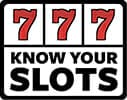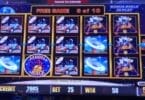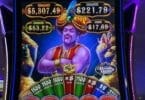If you spend enough time on gambling or Las Vegas forums, you’ll inevitably see a thread or 100 around things like worsening paybacks. The topic comes up a lot when you look at table games. There’s a lot of various scenarios that have popped up in recent years players can point to where the house edge is increasing:
- 6:5 payouts for Blackjack
- Mandatory side bets at some casinos for a 3:2 Blackjack table
- The reduction of payouts for the All, Tall, Small bets on a craps table
- The reduction from Triple to Double for a 2 or 12 on the field bet on the craps table
- The introduction of 000 Roulette
- The proliferation of “Carnival Games” that have a higher house edge
On a lot of these threads, you’ll see smarter gamblers lamenting the slow and steady proliferation of these trends on the casino floor, and a 6:5 Blackjack table being crowded next to a 3:2 Blackjack table that’s empty with a similar bet level.
The reality is, while some players (and hopefully that includes you, if you’re reading this site) are savvier and understand these changes and know what to look for and avoid lesser payout scenarios, many visitors to a casino are more casual players, seeking entertainment, and as such don’t always know what to look for, and accept these worse odds because the actual act of gambling is the entertainment, vs. winning big.
But if casinos can largely get away with this, they just simply roll these changes out to a broader part of their floor, leaving us to have to pay even closer attention.
The same holds true when it comes to slot machines. Anyone who reads the Advantage Play articles on this site and then finds plays in their casino are taking advantage of one aspect of this – some percentage of players don’t really understand the games they’re playing. They play, get up when they’ve had enough, and they may leave something behind for a more savvy player.
But what about just the general choice of games on a casino floor? I’ve talked about things like what picking a different denomination can do for a player in terms of improving payout percentages. In fact, the shift in game types has had a massive impact in what the slot floor generates for a casino over time. But to understand this, we have to first discuss a few major changes that carried slot machines forward to offer more variety.
Technological Enhancements
Slot machines used to be an affair where you’d drop in some number of coins, you’d spin, and then if you won, coins would fall into the hopper below. You’d then put more coins in, spin again, and hopefully get coins back into the hopper once more.
The first major technological improvement was the ability for the machine to track credits. This meant that instead of spitting coins out every single time there was a win, it could keep a balance on the machine of how many credits the player had. At any time they could cash it out, or they could keep playing, avoiding the need to feed the machine coins for some length of time.
The second was the ability to insert a bill and have the credits appear on the screen. Now, instead of feeding quarters one at a time, you could put a $20 bill in and have 80 credits appear on screen instantly. This made the games much more efficient, and reduced the need to carry around buckets of quarters (although getting paid out still meant ending up with one).
So the final technological advance, the TITO (ticket in/ticket out) system, completed the picture. Now, instead of having coins spit out, you got a ticket you could either cash in at a cashier or machine, or bring to the next machine. Besides removing the need to carry around buckets of quarters at all, this also meant machines could begin to support denominations where inputting and wagering coins was not effective. The fact that casinos didn’t have to fill machines with coins and so on was a great improvement as well.
The Advent of Penny Slots
Before TITO systems became commonplace, penny slots were a bit of a novelty. A handful existed, but they weren’t really a serious consideration. Nickel slots were a bit more common, but they do, were a bit challenging, although they were a bit more viable with a bill accepter and a credit balance on the screen. But $20 in nickels means you’d end up with 400 nickels, so that could become a challenge fast.
As such, until these technological advances took hold, quarter and dollar denomination slots were the bread and butter of a casino. Both had coins available
But smaller denomination slots simply became more viable as a result of these changes, and as such began to make their way on to the slot floor. Here’s data compiled from Nevada reporting information, for instance, showing how penny machines proliferated in the early 2000s. I chose to focus on the Las Vegas Strip reporting in this example, and penny slots were not on the 2003 year-end report.
| Year | Penny Machine Count | Win Amount (000s) | % Change | Win Percentage |
| 2004 | 2,526 | 112,925 | 187.59% | 9.94% |
| 2005 | 4,358 | 250,627 | 123.94% | 10.38% |
| 2006 | 5,779 | 382,964 | 52.80% | 10.94% |
| 2007 | 6,984 | 498,577 | 28.78% | 11.40% |
| 2008 | 8,829 | 613,388 | 22.23% | 11.71% |
| 2009 | 10,237 | 658,276 | 7.32% | 11.60% |
| 2010 | 11,674 | 743,101 | 12.89% | 11.55% |
| 2011 | 13,189 | 885,761 | 19.20% | 11.63% |
| 2012 | 13,797 | 952,503 | 7.54% | 11.69% |
| 2013 | 14,978 | 1,024,535 | 7.56% | 11.90% |
| 2014 | 15,704 | 1,074,748 | 4.90% | 11.66% |
| 2019 | 15,556 | 1,420,573 | 8.34% | 11.59% |
Two things are quickly apparent among the penny slot data – while the change was gradual, they became the dominant denomination on casino floors over time. The casinos also bumped the holds up on them as they worked out what a floor would tolerate, and came into a stable 11.5-12% range by the late 2000s, a number that has held through to 2019.
Also worth noting: Penny slot machines, just on the Las Vegas strip, is by itself a nearly $1.5 billion business a year, at least in 2019.
| Year | Quarter Machine Count | Win Amount (000s) | % Change | Win Percentage |
| 2004 | 19,637 | 783,616 | -2.84% | 7.82% |
| 2005 | 16,741 | 725,291 | -7.25% | 8.09% |
| 2006 | 12,351 | 598,007 | -17.55% | 8.51% |
| 2007 | 9,900 | 513,234 | -15.68% | 8.87% |
| 2008 | 8,634 | 412,027 | -19.89% | 8.47% |
| 2009 | 7,169 | 297,491 | -27.80% | 8.18% |
| 2010 | 5,959 | 262,773 | -11.67% | 8.33% |
| 2011 | 4,884 | 232,120 | -11.66% | 8.29% |
| 2012 | 3,800 | 187,991 | -19.01% | 8.63% |
| 2013 | 3,228 | 171,611 | -8.71% | 8.63% |
| 2014 | 2,666 | 156,241 | -8.96% | 8.55% |
| 2019 | 1,722 | 144,379 | -2.94% | 10.86% |
Similarly, quarter machines saw their dominance slowly whittled away over the course of a decade, although their holds were more stable, around 8.5% for most of the period reviewed.
Interestingly, between 2014 and 2019 the hold has spiked, probably due to the introduction of newer quarter machines with higher holds replacing older machines with lower holds as the hardware aged out. It could also reflect changes in payouts to Video Poker, which have been slowly tweaked downward, and are generally incorporated into the slot data as an electronic machine.
As far as the Las Vegas Strip is concerned, quarter machine holds are much tighter than found in other parts of the U.S. But it also indicates that Vegas players were long accepting of much higher holds on the penny machines (with the more than 1 billion in revenues generated off them alone), so they started to push on the quarter machines too.
This hold tightening doesn’t bear out similarly on nickel slot machines, which has consistently had lower holds on the Las Vegas Strip over the past few years, although there’s so few in this category – a few hundred across the strip – that’s probably held the holds down; casinos aren’t adding them, or messing with them.
Players Accepted Games with Higher Holds, Even at Higher Bets
In a future post I’ll be talking about casinos and the raising of the hold, which does certainly play a part, but the predominant change on the slot floor that has pushed holds up was the acceptance of penny slot machines.
Because smaller denomination units allow for more creativity in game design, and with that pays can be much more diverse, the game design creativity has evolved and grown over the years. Many three-reel slot machines, both in design and credit increments, were limited in what they could do around bonuses.
Newer penny slot machines have all sorts of diverse bonuses that get players excited. But the trade-off for that increased entertainment is a higher hold. In that 2004-2014 decade, players accepted a shaving of 3 percent off their payback in exchange for that play.
3 percent sounds small. What does that mean for a player? Well, let’s say you wager $100 through a slot machine. You used to get back, on average, $91.50, and now you’re getting back closer to $88. That’s a nearly 50% increase on how much the casino keeps. That 50% increase adds up and means your money won’t last nearly as long. And that doesn’t factor in other reasons your money isn’t lasting as long.
And the bets didn’t shrink just because the game was a penny denomination; a $3 Bonus Times bet on a three-reel, 3 credit $1 denomination is less than the $5 max bet you can make on Lightning Link at pennies. But the payback percentage on Bonus Times is going to be higher because of the denomination on the machine.
With bet creep pushing bets upwards on penny machines, we’re now paying the price in that we’re probably betting more per spin than we were on quarter machines 15 years ago, but paying a higher price for those bets.
Some increase is probably inevitable given inflation and such (as we have seen in the quarters data in 2019 vs. 2014), but it was our own decision to play the more entertaining penny slots that’s driven much of the casino’s increased benefits from slot machines over the past 15 years.








